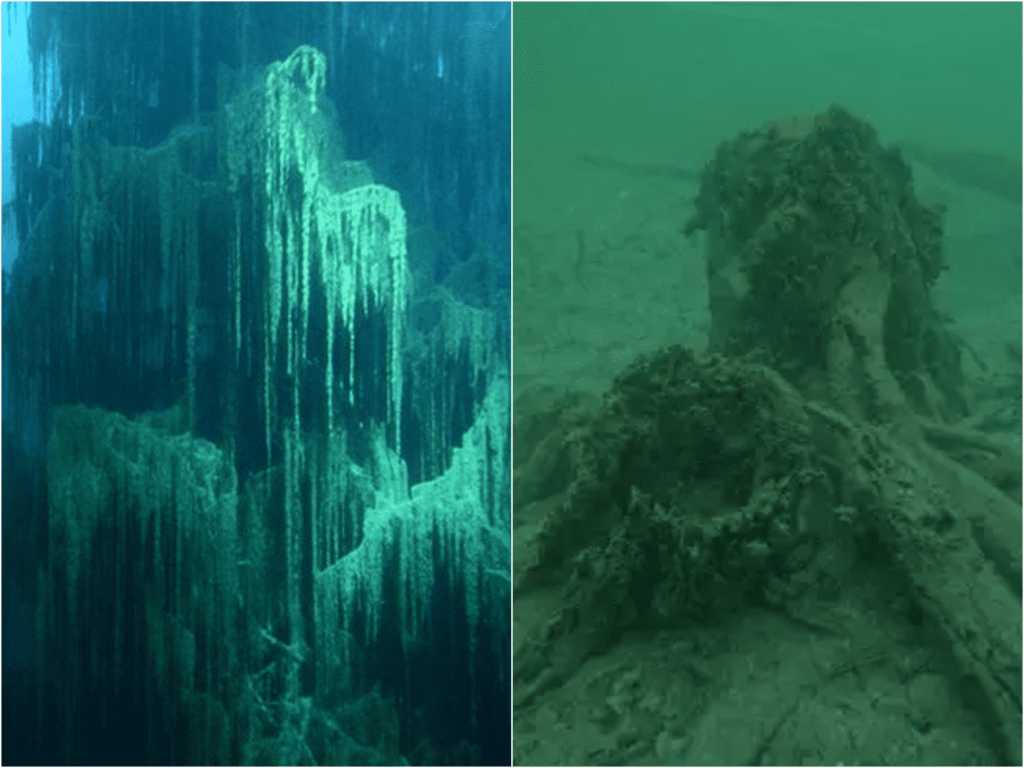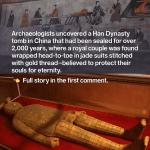The Secret Underwater Forest in Alabama That’s 60,000 Years Old
Just off the coast of Alabama, beneath the surface of the Gulf of Mexico, lies something straight out of a science fiction novel—a forest frozen in time. It’s not petrified. It’s not fossilized. It’s real wood. Real trees. A submerged bald cypress forest that’s been hidden for nearly 60,000 years.
This story starts with a hurricane. In 2004, Hurricane Ivan struck the Gulf Coast and stirred up the seafloor. In doing so, it exposed something no one expected—dozens of tree stumps rising eerily from the ocean bottom. Local fishermen began to talk. The rumors made their way to an environmental journalist and diver named Ben Raines, who eventually decided to dive down and see it for himself.
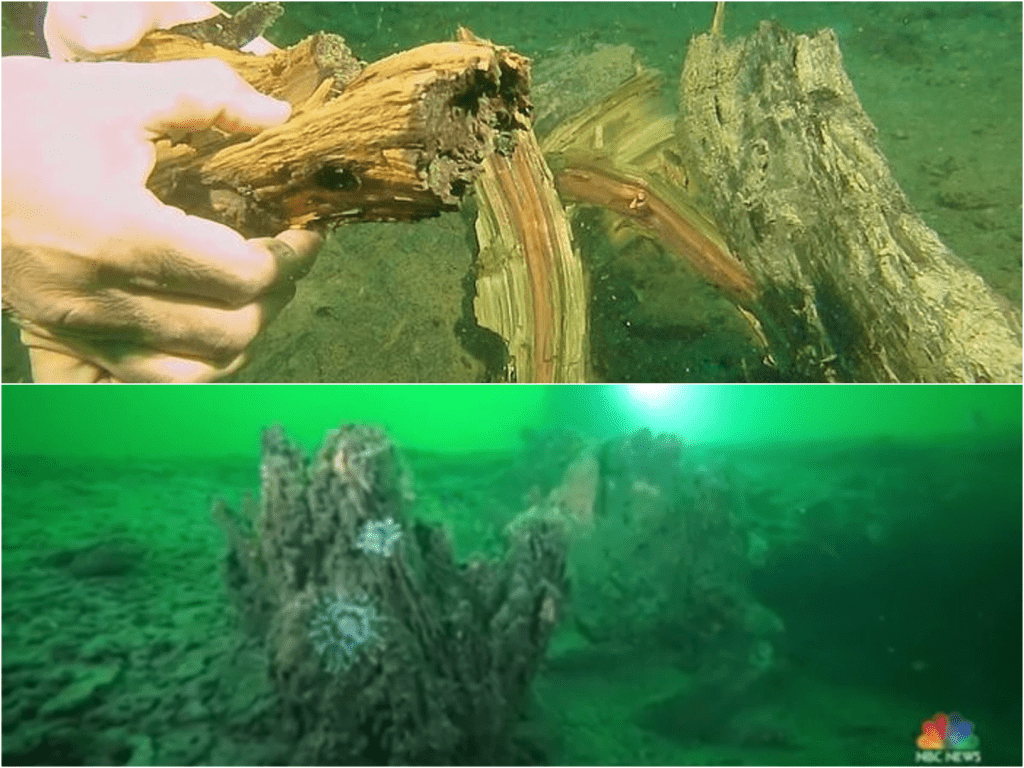
What he found was stunning. Towering tree stumps still rooted in place. Knees—the little knobby roots of bald cypress trees—sticking out of the sand. Branches fallen over but still intact. And everywhere, life: fish darting between the trunks, sea anemones clinging to roots, and shipworms burrowing through the ancient wood.
The trees had been perfectly preserved all this time thanks to an oxygen-free layer of sediment that had covered them until the storm ripped it away. Scientists tested samples, and the results were shocking. Radiocarbon dating showed the wood was more than 60,000 years old. That means these trees were standing long before humans ever set foot in North America.
Today, the underwater forest sits in about 60 feet of water, a few miles off the coast of Mobile, Alabama. It’s not a tourist destination—you can’t just grab a snorkel and swim out to it. It’s in a spot only accessible by boat, and diving there is for experienced people only. But even though most of us will never see it in person, the story it tells is deeply human.
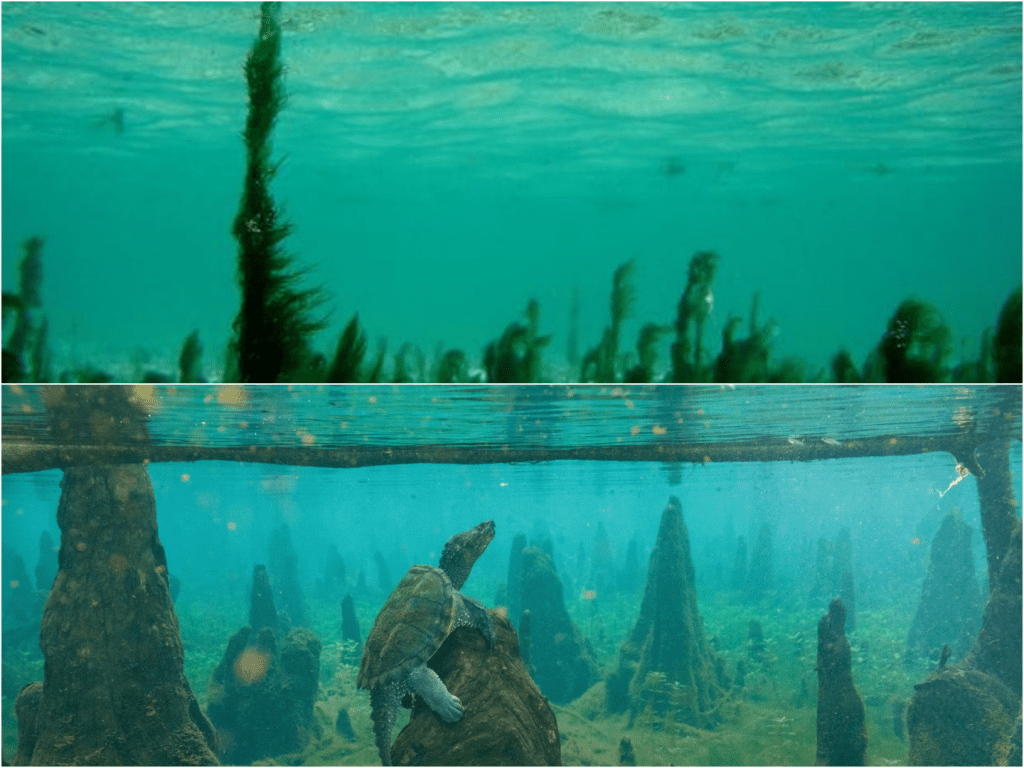
Imagine standing among those trees all those years ago. The land was dry then. Alabama’s coast was miles farther out. Sea levels were lower. The Earth was colder. These trees would’ve formed a dense, swampy forest, probably filled with wildlife. Then came a rapid warming period. Sea levels rose. Saltwater flooded in. And the forest disappeared under the waves.
That moment is a time capsule. It tells scientists about Earth’s past climate. The tree rings reveal patterns of rainfall, drought, and storm cycles. The pollen in the sediment gives clues about what plants were growing nearby. The shipworms might even help create new medicines. Every inch of this forest holds secrets from an age long gone.
But it’s also at risk. Because of the wood’s incredible quality—strong, well-preserved, and beautiful—some companies have shown interest in harvesting it. There have been efforts to remove stumps and use the wood for furniture. That’s why scientists and activists are pushing hard to protect the area, hoping it will one day become a marine sanctuary.
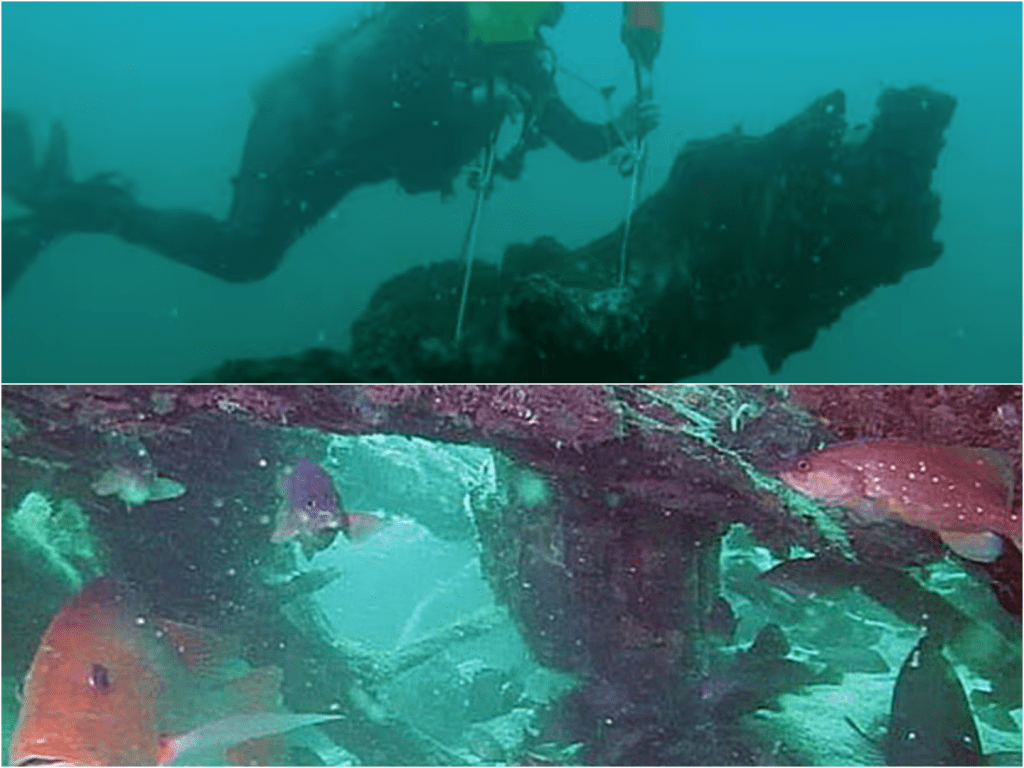
The forest matters not just because it’s ancient, but because it’s alive. Underwater life thrives there. Fish breed and feed. The roots provide shelter. In a world where coral reefs are dying, this unexpected forest has become a quiet oasis for marine creatures.
Ben Raines described diving there like walking through a ghost forest. It’s silent, surreal, almost sacred. The fact that we only discovered it because of a hurricane makes it feel like nature whispered a secret and then tried to cover it back up.
And it makes you think—what else is out there? How many other stories are buried beneath the sand, just waiting to be uncovered? This place is a reminder that Earth is still full of mysteries. That sometimes, the past isn’t buried in a museum. It’s right beneath our feet—or in this case, beneath the waves.
As the fight continues to protect the forest, people are slowly starting to realize how precious it is. It’s not just an ancient swamp. It’s a piece of Earth’s memory. A warning about climate. A wonder of preservation. A home for life. A quiet, sunken miracle.
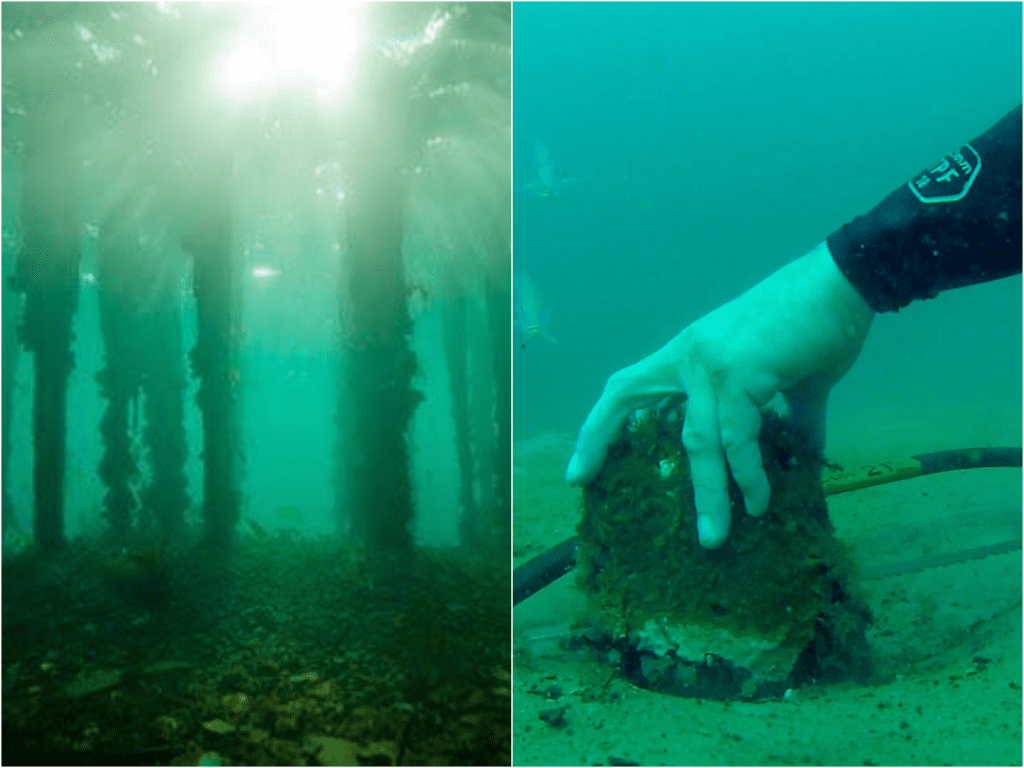

Lena Carter is a travel writer and photographer passionate about uncovering the beauty and diversity of the world’s most stunning destinations. With a background in cultural journalism and over five years of experience in travel blogging, she focuses on turning real-world visuals into inspiring stories. Lena believes that every city, village, and natural wonder has a unique story to tell — and she’s here to share it one photo and article at a time.
